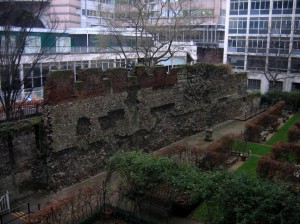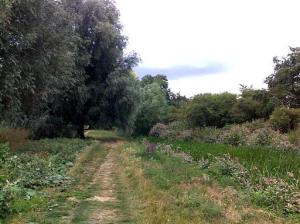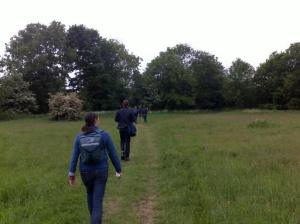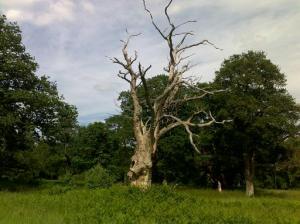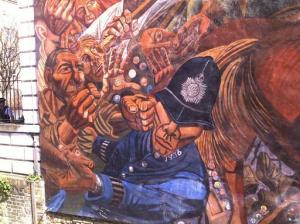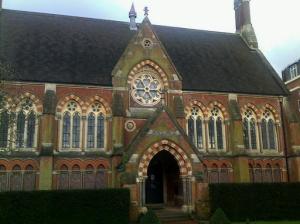A surprisingly green walk along a disused transport link in North London
Finsbury Park to Alexandra Palace, North London
The stimulus for this walk came from attending a talk by Oliver Green, curator of the London Transport Museum, held at the Museum of London but one of a series of fascinating (and free!) public lectures arranged by Gresham College. In his talk, Mr Green discussed pre-and post-Second World War developments on the London Underground. One major project was the ‘New Works Programme‘, begun in 1935, which included proposals relating to what is now the Northern Line – the Northern Heights plan.
Back in the 1860s, the Edgware, Highgate and London Railway (EH&LR) had been busy proposing and constructing a line between Finsbury Park and Edgware (with a branch to Muswell Hill), eventually opened on 22nd August 1867 shortly after the EH&LR had been taken over by the Great Northern Railway (GNR). An extension of the Muswell Hill branch to Alexandra Palace was opened by the Muswell Hill & Palace Railway on 24th May 1873, but closed almost immediately when the Palace burnt down only 16 days later; re-opened in 1875, by 1911 this too was under the control of the GNR.
Under the Northern Heights plan, London Transport proposed to take control of and electrify these existing lines, replacing ancient carriages pulled by obsolete steam locomotives with modern, efficient electric tube trains. Also proposed was an extension to the Northern Line from Edgware to Bushey Heath. Construction commenced in the late 1930s only to be halted on the outbreak of war. But when peace returned, post-war austerity and the advent of legislation to create a Green Belt around London meant that the incomplete works were never re-started, despite the extensions being marked as ‘Under Construction’ on tube maps for a number of years. The electrification plans never fully came to fruition, while the early but unfinished stages of construction for the Bushey Heath extension now lie abandoned in fields near the M25. Between Finchley and Edgware, electrification only reached Mill Hill East and the remaining line never reopened to passenger services. It continued to serve goods trains until its final closure on 29th February 1964, leaving only the stubby branch off the Northern Line still in use today. A similar fate befell the line between Finsbury Park and Alexandra Palace: passenger services ended in 1954, and after a few years of goods-only usage, the line gradually closed in stages such that all traffic ceased by September 1970.
The line of the railway between Finsbury Park and Alexandra Palace is now a linear park, a green ribbon winding its way stealthily through the suburbs of north London. Plenty has been written about the Northern Heights (and this great video explains the Bushey Heath extension) and many others before me have followed its abandoned trackbed – what is it about disused railway lines that so fascinates so many people?
Start: Finsbury Park Station
Finish: Alexandra Palace Station
Length: 4½ miles/3 hours
How to get there: Finsbury Park is very easy to reach: by tube (Victoria and Piccadilly lines), by bus or by First Capital Connect train services from Kings Cross or Moorgate. The return from Alexandra Palace is by train back to Kings Cross or Moorgate. An Oyster card can be used for both journeys, probably the cheapest option.

